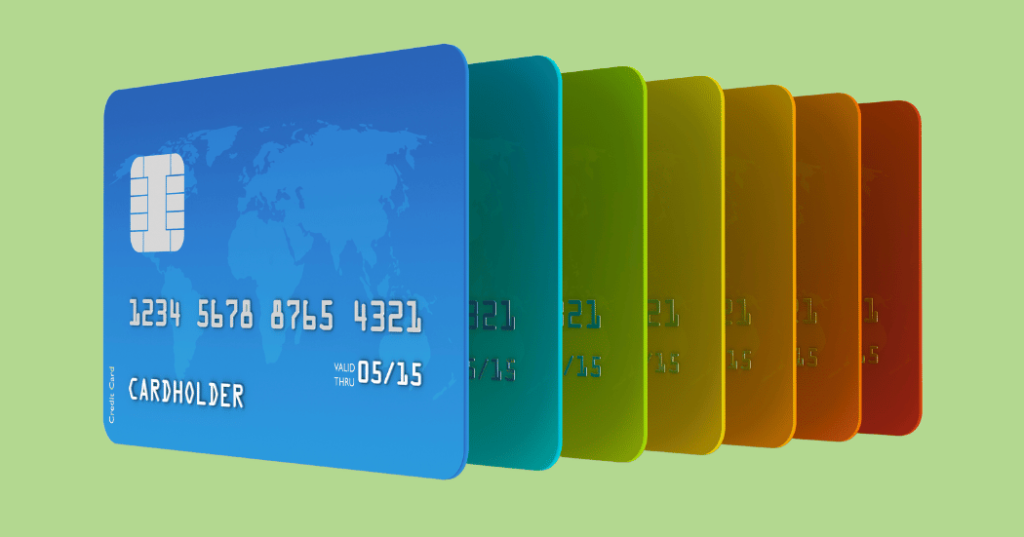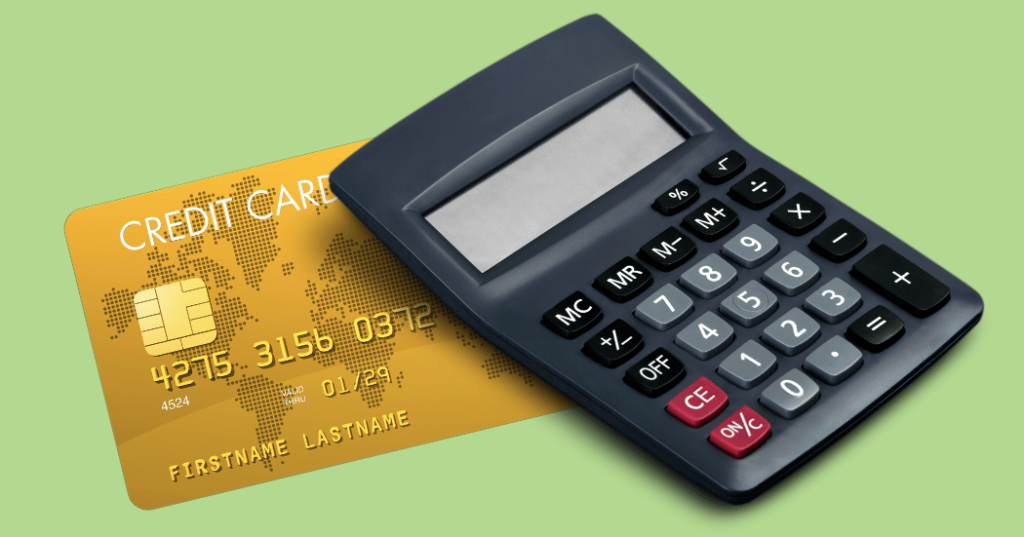We live in a world where plastic holds the power to shape financial destinies. In this guide, we’ll unravel the complexities of credit cards and equip you with the foundational knowledge needed to navigate this intricate landscape for clients with confidence.
Credit cards have become integral to modern financial transactions, offering convenience and flexibility. But behind the sleek designs and enticing offers lie essential concepts that every financial advisor should understand. This guide will provide you with the tools to effectively advise your clients on how credit cards work, the different types of cards, responsible credit usage, and more.
Credit Cards 101
How do Credit Cards Work?
Credit cards have become an integral part of modern-day financial transactions, offering convenience and flexibility to millions of individuals. To help clients make the most of credit cards, it’s essential that as their advisor you understand how they work and the key terms associated with them. Outlined below are the fundamental aspects all advisors should know:
Credit Limit
The credit limit is the maximum amount you can charge on your credit card. It represents your spending power and is determined by various factors, including your credit history, income, and credit score. Credit card issuers assess your financial stability and repayment ability before assigning a credit limit. Staying within your credit limit is important to avoid over-limit fees and maintain a healthy credit profile.
Billing Cycle
The billing cycle is the period during which you make purchases using your credit card. It typically lasts around 30 days and ends with the closing date. At the end of the billing cycle, your credit card issuer generates a statement that summarizes your transactions, outstanding balance, and minimum payment due.
Minimum Payment
The minimum payment is the smallest amount you must pay by the statement due date to keep your account in good standing. It’s usually a percentage of your total balance, often around 1-3%. While making the minimum payment prevents late fees and avoids negative impacts on your credit score, it’s crucial to understand that paying only the minimum prolongs your debt repayment and can lead to higher interest charges.
Interest Rates
Interest rates play a significant role in the cost of borrowing with credit cards. The Annual Percentage Rate (APR) represents the yearly cost of borrowing, including interest and fees. The actual interest rate, often referred to as the periodic rate, is the monthly interest rate applied to your outstanding balance. It’s important to note that some credit cards may have variable interest rates that can change based on market conditions.
Grace Period
The grace period is a timeframe during which you can make purchases without incurring interest charges. It typically extends from the end of the billing cycle to the statement due date. To take advantage of the grace period, pay your balance in full by the statement due date. Failure to do so can result in the accrual of interest on the remaining balance.

What are the Benefits of Clients Having Credit Cards?
Builds Credit History and Improves Credit Score
A credit card provides an opportunity for clients to establish and strengthen their credit history and improve their credit score, a crucial factor in qualifying for loans and favorable interest rates.
Convenient and Secure Transactions
Credit cards offer a secure and convenient way to make purchases, both in-store and online, often with added protection against fraud.
Emergency Funds and Cash Flow:
Having a credit card can serve as a financial safety net during unexpected emergencies or temporary cash flow gaps.
Access to Rewards and Perks
Many cards provide rewards, cash back, and exclusive perks such as extended warranties, travel insurance, and concierge services.
Tracking and Budgeting
Credit card statements offer a clear overview of spending patterns, helping clients track expenses and budget effectively.
Credit Card Benefits Education
Educating clients about the benefits and responsible use of credit cards fosters financial literacy and educates them on the importance of credit scores, responsible borrowing, and effective debt management.

What are the Different Types of Credit Cards?
There are many different types of credit cards available to clients. The type – or types – of card that your clients opens depends on their unique financial situation, lifestyle, and goals. As a financial advisor, you want to guide your clients toward finding the best type of credit card that is right for them.
Below is a list of the different types of credit cards available:
- Cash Back: Cash back credit cards offer a percentage of your purchases as a cash rebate, providing a way to earn money on your spending.
- Travel Reward: Travel reward credit cards offer points or miles for travel-related expenses, allowing you to earn rewards for flights, hotels, and more.
- Balance Transfer: Balance transfer credit cards allow you to transfer high-interest debt from one card to another with lower or no interest, helping you save on interest fees.
- Secured: Secured credit cards require a security deposit and are designed to help individuals build or rebuild their credit.
- Business: Business credit cards cater to business expenses and offer features tailored to business needs, such as expense tracking and employee cards.
- Rewards: Rewards credit cards offer various types of rewards, such as points or cash back, for eligible purchases.
- Student: Student credit cards are designed for students with limited credit history and often come with lower credit limits and educational resources.
- Retail: Retail credit cards are issued by specific retailers and offer discounts, rewards, or special financing options for purchases made at that retailer.
- Premium: Premium credit cards provide exclusive benefits, such as airport lounge access and concierge services, often with higher annual fees.
- Charity: Charity credit cards donate a portion of your purchases to a designated charitable organization, allowing you to contribute while you spend.

How do Credit Card Fees work?
Understanding the intricacies of credit card fees is important when helping your clients manage debt effectively. Knowing the various types of fees and their implications allows you to help clients make informed decisions in managing and minimizing these fees.
Annual Fee
An annual fee is a recurring charge that cardholders pay each year for the privilege of using the credit card.
Purpose: Annual fees are often associated with premium or rewards credit cards that offer exclusive benefits and perks.
Impact: The annual fee contributes to the card’s overall cost of ownership and should be weighed against the benefits provided.
Interest Charges
Interest charges, also known as finance charges, accrue when cardholders carry a balance from month to month.
Purpose: Interest compensates the credit card issuer for lending money to the cardholder.
Impact: High-interest rates can result in substantial costs over time, making it important for cardholders to pay their balances in full to avoid interest charges.
Late Payment Fee
A late payment fee is charged when the cardholder fails to make the minimum payment by the due date.
Purpose: The fee serves as a penalty for late payments and covers administrative costs.
Impact: Late payment fees can be substantial and negatively affect the cardholder’s credit score.
Balance Transfer Fee
A balance transfer fee is charged when a cardholder transfers a balance from one credit card to another.
Purpose: The fee compensates the issuer for processing the balance transfer.
Impact: While balance transfers can help save on interest, the fee should be considered when evaluating the potential savings.
Cash Advance Fee
A cash advance fee is charged when a cardholder obtains cash from an ATM using their credit card.
Purpose: The fee covers the cost of providing cash advances and serves as a deterrent to discourage frequent cash withdrawals.
Impact: Cash advance fees are often higher than other fees and may be accompanied by higher interest rates.
Foreign Transaction Fee
A foreign transaction fee is charged when cardholders make purchases in foreign currencies or conduct transactions abroad.
Purpose: The fee compensates for currency conversion costs and processing foreign transactions.
Impact: Foreign transaction fees can add up quickly for frequent international travellers.
Overlimit Fee
An over-limit fee is charged when the cardholder exceeds their credit limit.
Purpose: The fee serves as a penalty for surpassing the credit limit assigned to the card.
Impact: Over-limit fees can be avoided by closely monitoring spending and staying within the credit limit.
Returned Payment Fee
A returned payment fee is charged when a payment is returned due to insufficient funds or other reasons.
Purpose: The fee covers the costs associated with processing and handling returned payments.
Impact: Returned payment fees can be avoided by ensuring sufficient funds are available when making payments.

How is APR Calculated on Credit Cards?
The calculation of APR involves a combination of factors, including the interest rate, fees, and compounding frequency. Here’s a step-by-step breakdown of how APR is typically calculated:
Interest Rate
The interest rate is a key component of APR. It’s usually expressed as a percentage and can be either fixed or variable. This rate determines the cost of borrowing, and it’s important to clarify with credit card issuers whether the rate is annualized.
Fees and Charges
APR incorporates various fees, such as annual fees, late payment fees, and balance transfer fees. To calculate APR accurately, include all applicable fees.
Compounding Frequency
Credit card interest can compound daily, monthly, or annually. The compounding frequency affects the total amount of interest paid over time. For precise calculations, it’s best to know the specific compounding frequency used by the credit card issuer.
Formula
To calculate the effective APR, you can use the formula:
Effective APR = [(1 + (Periodic Rate))^n – 1] x 100
Here, the Periodic Rate is the monthly interest rate (Annual Interest Rate ÷ 12), and n represents the number of compounding periods in a year.
Let’s assume a credit card has a 21% annual interest rate, no annual fee, and monthly compounding. Here’s how you can calculate it step by step:
- Convert the Annual Interest Rate to a Periodic Rate: Annual Interest Rate = 21%
- Periodic Rate (Monthly) = Annual Interest Rate ÷ 12 = 21% ÷ 12 ≈ 0.0175
- Determine the Number of Compounding Periods in a Year: Since the credit card compounds interest monthly, there are 12 compounding periods in a year.
- Apply the Formula: Effective APR = [(1 + Periodic Rate)^n – 1] x 100
The effective APR for the credit card with a 21% annual interest rate, no annual fee, and monthly compounding is approximately 21.48%.
How Can You Help Clients Build Credit?
Credit history is like a financial report card that lenders use to assess creditworthiness. Credit cards, when used responsibly, can be powerful tools for building a positive credit history. As a financial advisor, you can assist your clients in understanding the role of credit cards in credit building, the intricate relationship between credit utilization and credit scores, and provide actionable tips for responsible credit card use to maintain a robust credit profile for your clients.
Proper Credit Utilization
Equipping your clients with a deep understanding of credit utilization can significantly impact their credit scores. As an advisor, you can help them grasp the concept that maintaining a low credit utilization ratio—ideally below 30%—can enhance their creditworthiness. By illustrating the link between credit utilization and credit scores, you empower your clients to make mindful decisions that positively influence their financial futures.
Timely Payments
Educate your clients on the importance of timely credit card payments. Emphasize that consistent on-time payments showcase reliability and financial prudence. As their trusted advisor, provide practical strategies for setting up payment reminders, automating payments, and fostering effective budgeting techniques to ensure they adhere to payment due dates.
Responsible Credit Card Use
Advise your clients to use credit cards consciously, avoiding maxing out cards, paying credit card balances in full whenever possible, minimizing interest charges, and bolstering positive payment history.
Help your clients to strike the right balance when it comes to opening new credit accounts, ensuring they don’t inadvertently lower their credit scores. It’s important to also educate clients on the potential impact of multiple credit inquiries, advising them to apply for new credit only when necessary.
Takeaway
As a financial advisor catering to the unique needs of your clients, delving into the realm of credit cards is a strategic move that enhances your advisory toolkit. Your understanding of credit cards will enable you to steer clients away from common pitfalls and toward credit strategies that align with their goals.
As you continue to advise your clients on credit card selection, debt management, and optimal usage, remember that you are not just guiding them through the intricacies of credit; you are enabling them to make informed decisions that influence their financial futures. Your dedication to continuous learning and your commitment to sharing this knowledge will undoubtedly set you apart as a proactive and insightful financial advisor.






